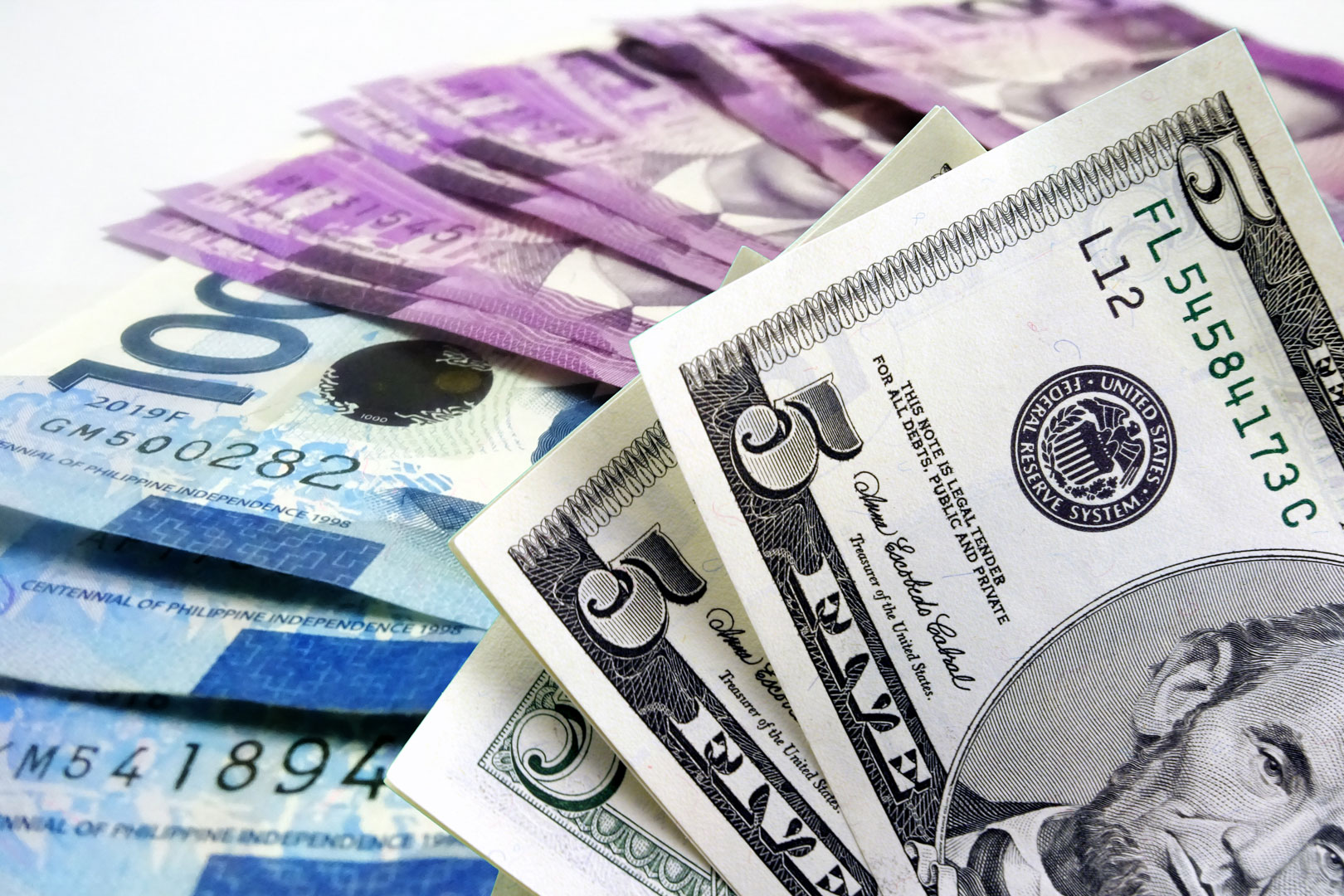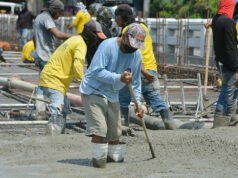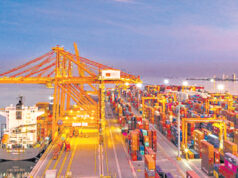Peso plunges on hawkish Fed

THE PESO plunged back to the P57-a-dollar level on Monday following hawkish comments from the US Federal Reserve chief.
The local unit closed at P57.43 per dollar on Monday, falling by 60.9 centavos from its P56.821 finish on Friday, Bankers Association of the Philippines data showed.
This was the peso’s biggest one-day drop since it lost 61.5 centavos on Sept. 9 last year.
Year to date, however, the local unit is still up by 0.72% or 41.5 centavos from its end-2024 close of P57.845 per dollar.
The peso opened Monday’s session weaker at P57.10 against the dollar. Its worst showing was at P57.45, while its intraday best was at P57 versus the greenback.
Dollars traded increased to $2.17 billion on Monday from $1.99 billion on Friday.
“The market responded to the higher-than-expected US NFP (nonfarm payrolls) alongside hawkish comments from Fed Chairman Jerome H. Powell, which pushed back expectations of a rate cut,” a trader said by phone interview.
US President Donald J. Trump’s new tariffs are “larger than expected,” and the economic fallout including higher inflation and slower growth likely will be as well, Mr. Powell said on Friday, while cautioning it was still too soon to know what the right response from the central bank ought to be, Reuters reported.
“We face a highly uncertain outlook with elevated risks of both higher unemployment and higher inflation,” undermining both of the Fed’s mandates of 2% inflation and maximum employment, Mr. Powell told a business journalists’ conference in Arlington, Virginia, in remarks that pointed to difficult decisions ahead for the US central bank and did nothing to staunch a global bloodletting in stock markets.
Investors had looked to Mr. Powell’s speech for reassurance that perhaps the Fed was poised to take supportive actions as it has in previous moments of extreme market duress, and Mr. Trump himself took to his social media platform to say now would be the “perfect time” for the Fed to cut interest rates.
But Mr. Powell did not address the sell-off directly, instead acknowledging that the Fed faced the same uncertainty engulfing investors and company executives. Mr. Powell said the Fed has time to wait for more data to decide how monetary policy should respond, but the central bank’s focus will be on ensuring that inflation expectations remain anchored, particularly if Mr. Trump’s import taxes touch off a more persistent jump in price pressures.
“While tariffs are highly likely to generate at least a temporary rise in inflation, it is also possible that the effects could be more persistent,” Mr. Powell said.
“Our obligation is to keep longer-term inflation expectations well anchored and to make certain that a one-time increase in the price level does not become an ongoing inflation problem,” he said.
Meanwhile, the peso was also dragged lower by the sharp decline in Philippine stocks on Monday, Rizal Commercial Banking Corp. Chief Economist Michael L. Ricafort said in a Viber message.
The Philippine Stock Exchange index sank by 4.29% or 261.34 points to close at 5,822.85 on Monday. This was its worst finish in over two-and-a-half years or since it closed at 5,783.15 on Oct. 3, 2022. This also marked its steepest one-day drop since June 2020.
For Tuesday, the trader expects the peso to move between P57.20 and P57.60 per dollar, while Mr. Ricafort said it could range from P57.30 to P57.55. — Aaron Michael C. Sy with Reuters



